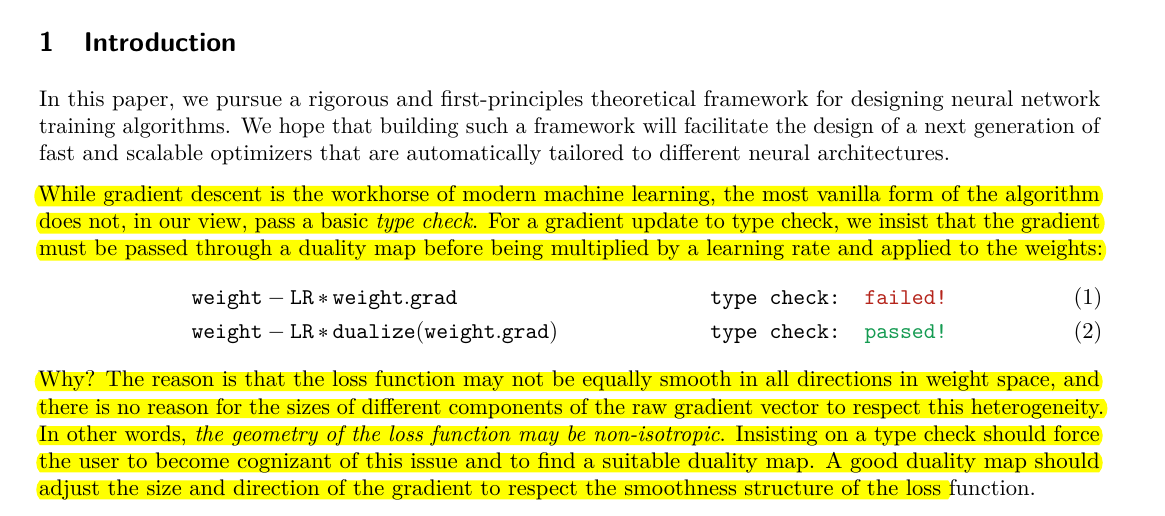Modular Duality in Deep Learning
Making gradient descent respect the geometry of your neural network
Making gradient descent respect the geometry of your neural network
A mathematically rigorous way to make gradients and weights play nice together
🎯 Original Problem:
Raw gradient descent has a fundamental type mismatch - you can't directly subtract gradients from weights since they live in different mathematical spaces. The loss function's geometry may be unequally smooth in different directions, which raw gradients don't respect.
🔧 Solution in this Paper:
• Introduces "modular dualization" - a systematic way to construct duality maps for neural networks
• Works in 3 steps:
Assign operator norms to layers based on their semantics
Build duality maps for individual layers
Recursively combine layer maps into a single network-wide map
• Proposes 3 practical implementations:
Sketching using randomized methods
Iterations for inverse matrix roots
Novel rectangular Newton-Schulz iteration for stable GPU computations
💡 Key Insights:
• Unifies two major optimization approaches (μP and Shampoo) under one framework
• Provides a type system for deep learning
• Shows how to properly handle gradient updates respecting layer semantics
• Offers new insights into weight change dynamics at large network widths
📊 Results:
• Set new speed records for NanoGPT training using rectangular Newton-Schulz iteration
• Provides numerically stable computations on GPUs
• Successfully implemented for key layer types: Linear, Embed, and Conv2D
• Demonstrates practical scalability for transformer architectures
🎯 The paper introduces "modular dualization" -
a systematic procedure to construct duality maps for general neural networks. It works in 3 steps:
Assign operator norms to individual layers based on their semantics
Construct duality maps for individual layers
Recursively induce a single duality map on the full network architecture based on layer maps.
💡 Key implications and potential impact of this Paper
The framework:
Provides a type system for deep learning
Enables faster training methods (already set speed records for NanoGPT training)
Unifies different optimization approaches under one theoretical framework
Helps understand activation-update alignment in neural networks
Offers new insights into weight change dynamics at large widths.



